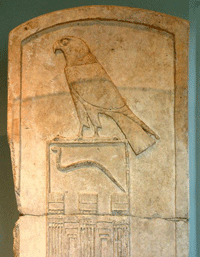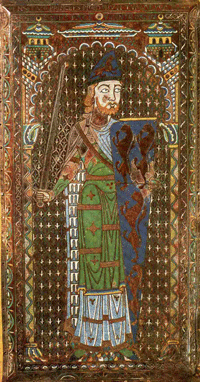
Every army in history needed a way to distinguish it from the
enemy. This was accomplished by markings on clothing, helmets,
armor, or shields that set one army apart from the other.
Distinctive colors and symbols were used so that the combatants
could easily tell friend from foe in the heat of battle.
They could also advertise rank and were a way of boasting about
identity- one's homeland, ancestry and exploits. The Greeks often
bore images of animals on their shields to identify their home
city state. The Athenians bore an owl, the Thebans a sphynx, and
so on. These images represented a shorthand of an important,
defining myth about their city state or its patron deity.
Roman armies bore standards with distinctive symbols on them to identify each legion. It is believed that the Welsh dragon, a famous symbol in British heraldry, originally derived from the standard of a Roman legion posted in Wales 2. More like the heraldry of medieval times, the ancient Israelites carried banners that identified each tribe and Egyptian serekh emblems were used on trade goods to identify individual pharaohs. 3
Heraldry as we know it now has descended from these practices. The rules of today derive from regulations devised in early medieval northern Europe, mostly in France, England and the Holy Roman Empire, but their use extended as far east as Poland and as far south as Spain. Though heraldic arms first appeared during the reign of Charlemagne, true heraldic symbols that were passed down through noble families did not appear until the 12th century. 4 Heraldry began as a strictly military insignia for rulers and their dynasties. The Anglo-Norman term, "herald" derives from the Germanic "harja-waldaz" which means "military commander." The practice soon spread to the nobility, from high to low. From the mid-14th century onward, it also began to be used by rich non-nobles in non-military settings.
